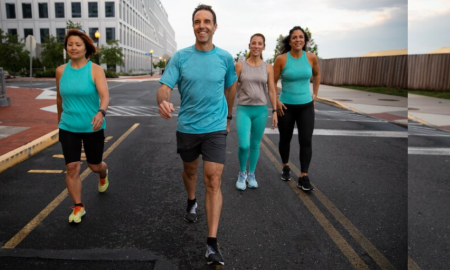
Brazilian Lifts for the Behind Are Quickly Turning Dangerous

The Brazilian Buttock Lift (BBL) is getting very popular. It shouldn’t come as a surprise since the popular culture is obsessed with perky and large behinds. Take Nicki Minaj, Cardi B, Jennifer Lopez or even Kim K, everyone wants to emulate their favorite diva.

But if The American Society of Plastic Surgeons are to be believed, then this is a cosmetic procedure that one should be vary of. Yes, all surgical procedures have a certain degree of risk involved, but BBLs have an alarmingly high mortality rate; 1 in 3,000 BBL patients are said to die due to the procedure. The cause? Fat being injected too deep, causing it to enter the circulatory system and leading to a pulmonary embolism.
What is a BBL?

Although the procedure is called a lift, it really isn’t a lift. The procedure enlarges the derrière by injecting fat into it. The fat used is the patient’s own, which usually is extracted from the thigh or abdomen. The procedure has gained so much popularity that the American Society of Plastic Surgeons had reported that it’s member doctors had performed more than 20,300 BBL or augmentations in 2017 alone. This was 10% more than the figures recorded in 2016. It is also popular because people like the idea of using their own fat for the procedure, as opposed to making use of silicone or chemical fillers. Also, as most doctors noted, who wouldn’t want to lose a couple of pounds of fat from the belly or thighs and at the same time, have the behind region become more shapely and prominent.
Why the danger?
Different factors make the BBL surgery dangerous. For instance, the buttock region has a lot of blood vessels, which may get punctured or ruptured if the fat is injected improperly. As remarked earlier, if the fat enters the circulatory system and reached the lungs, the patient could suffer a pulmonary embolism. Because of the blood clot that forms, the body is unable to get proper oxygen from the lungs and this could be fatal if not treated immediately. Other things one must take care of are; what instruments are used for the procedure (size and type), the amount of fat injected and at what angle it is injected.

Little details like how the patient is positioned can also have negative outcomes! Then there are those non-fatal complications such as infections, bleeding, and improper skin healing. Not just with novices, board certified doctors have experienced these complications, as well, but of course, the procedure carries much more risk if performed by a someone who is not a trained or professionally qualified doctor. Take the case of rapper Cardi B, who admitted to getting illegal injection on her derrière, in a ‘back alley operation’. Injections which contain unsafe and inappropriate substances, such as silicone can cause siliconomas and require emergency medical care.
What are the safer alternatives?
A BBL is certainly not the only option to get a shapely behind, but the other procedures come with their own risks, so it is best that you consult a doctor before making a decision. There are implants, an actual buttock lift (for those who have lost a lot of weight), auto-augmentation and a combination of injections and implants to choose from. There is also a procedure whereby an injectable filler uses the body’s own collagen and also reduces the occurrence of cellulite, now that’s what we call a win-win! On the downside, it does need a lot of product to be injected and lasts about 2-5 years.
![]()
Non-surgical options include the EmSculpt, which provides the muscles with electric stimulations to increase muscle mass and hence, look more prominent. The most natural and inexpensive alternative remains to be good ‘ol exercise, where certain work out routines are guaranteed to enlarge desired areas and build muscle.
These may be the safest bets unless the various professional bodies are able to standardise and regulate the BBL industry. Given the high mortality rates involved, people who are not plastic surgeons should not be doing this surgery at all and those undergoing BBLs should necessarily check the accreditation and license of the doctor who is about to perform the surgery. The public needs to be made aware of this, and fast. During the consultation (which every patient is entitled to before any surgery) the doctor must explain to the patient, all risks involved with their procedure, so that they can make an informed decision, whether to undergo the procedure, or simply give it a pass and opt for a safer alternative.
More in Plastic Surgery
-
`
Summer Vibes: 5 Ideas for Unforgettable Hangouts with Friends
Summer is the season for outdoor fun and creating unforgettable memories with friends and loved ones. Whether you’re looking for a...
July 5, 2023 -
`
What Do These Skin Problems Tell about Your Health Condition?
Some medical conditions are tricky to spot simply because they are hidden and almost show no symptoms. However, they can manifest...
June 13, 2023 -
`
Wellness Tips to Help You Get Rid of Your Winter Blues
Winters can be a tough season not just for our body but also for our mental health. The sun rises later than usual...
May 7, 2023 -
`
Exploring the Latest Skin Care Trends: What’s Hot and What’s Not in 2023
The world of skin care is constantly evolving, with new ingredients and treatments popping up every year. With so many different...
April 24, 2023 -
`
Celine Dion Values Her Skin So Much That She Dropped $2 Million For This Device!
Utmost focus has been given to skincare, especially during this quarantine season, as more and more people opt to take care...
April 11, 2023 -
`
Samuel L. Jackson is a Vegan and He’s Not Ashamed to Admit it
Samuel L. Jackson, the iconic Hollywood actor, has been expressing his preference for vegan eating since August, 2018, due to some...
April 6, 2023 -
`
Terry Crews Uses THIS Technique to Maintain his Impressive Physique
Crews is a big boy. The Brooklyn Nine Nine actor maintains his weight at 245 lbs and being this bulked up...
April 5, 2023 -
`
The Most Famous Procedures in the Plastic Surgery Capital of the World
If you think that the United States is the place where the most number of cosmetic surgeries in the world happen,...
April 5, 2023 -
`
We Bet You’ve Never Seen Megan Fox Look Like This Before
Fans of Megan Fox would probably not recognize her with her new look, but before you panic, you have nothing to...
April 5, 2023















You must be logged in to post a comment Login